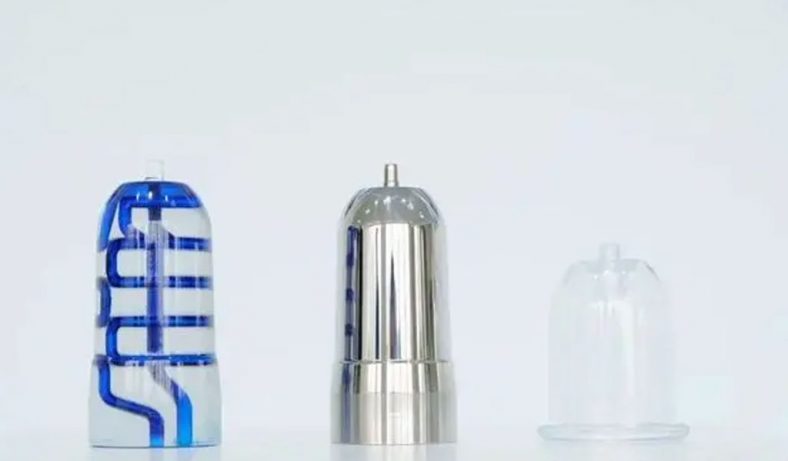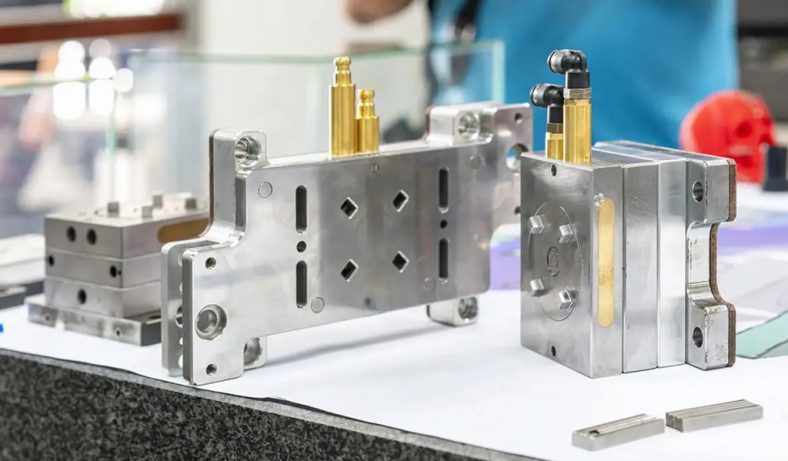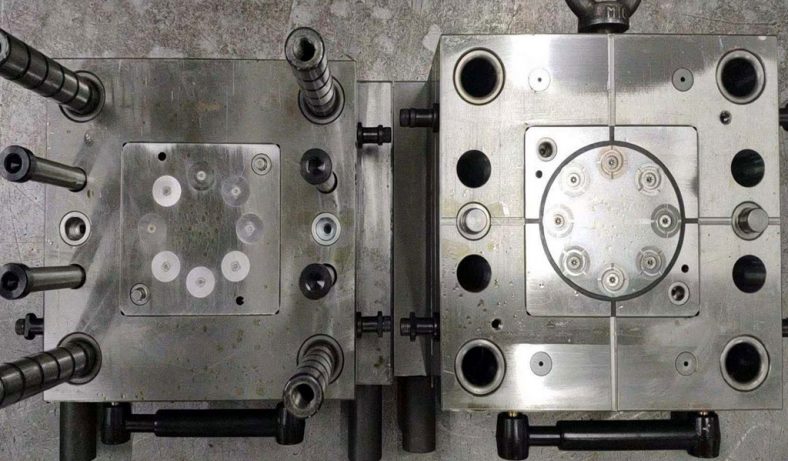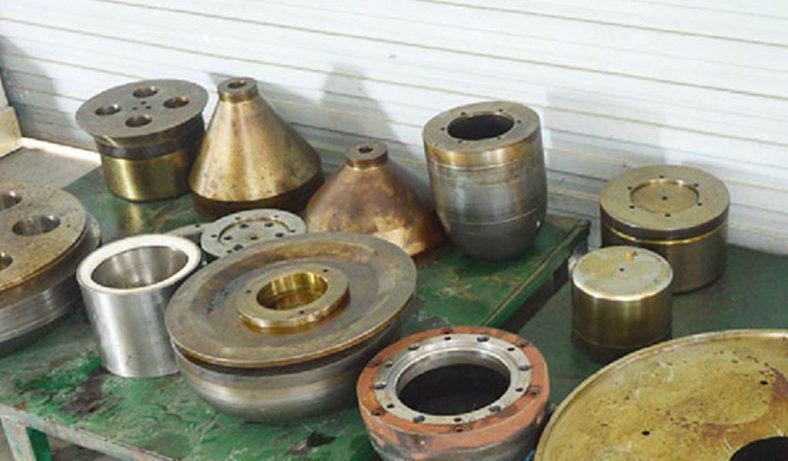
Mold Parts & Components
- The manufacturing accuracy of the mold size should be within the range of 0.005 to 0.02 mm
- The verticality is required to be within the range of 0.01 to 0.02 mm
- The co-axiality is required to be within the range of 0.01 to 0.03 mm
- Lastly, the parallelism of the upper and lower planes of the moving and fixed mold parting surfaces should be within the range of 0.01 to 0.03 mm.
>>>All uploaded drawings are strictly confidential, check the confidentiality agreement
Custom Mold Parts & Components Services – Die & Tooling Manufacturing Company
BE-CU is a leading manufacturer specializing in providing advanced manufacturing technology solutions and precision components for molds. We are equipped with state-of-the-art mold accessory production equipment, including five-axis machining centers, PG machines, and Sodick EDM wire cutting machines. Our team comprises an experienced engineering department, a professional sales team, skilled technicians, a dedicated QC team, and a specialized after-sales service department.
Our products are extensively used in various fields, such as hardware and plastic molds, medical device molds, medical packaging molds, cosmetic and bottle cap molds, and precision mechanical automation. We offer comprehensive mold solutions to our customers.
We specialize in producing custom mold accessories, including precision ejector pins, sleeves, flat ejector pins, punches, core pins, guide pillars, bushings, inserts, die-casting mold cores, punches, dies, and non-standard parts, with precision up to 0.001MM. All raw materials are imported from Japan, Germany, and Sweden, ensuring stable performance. Heat treatment is provided by professional suppliers, and advanced production equipment and experienced professionals guarantee superior precision, performance, and product longevity, along with more convenient services.
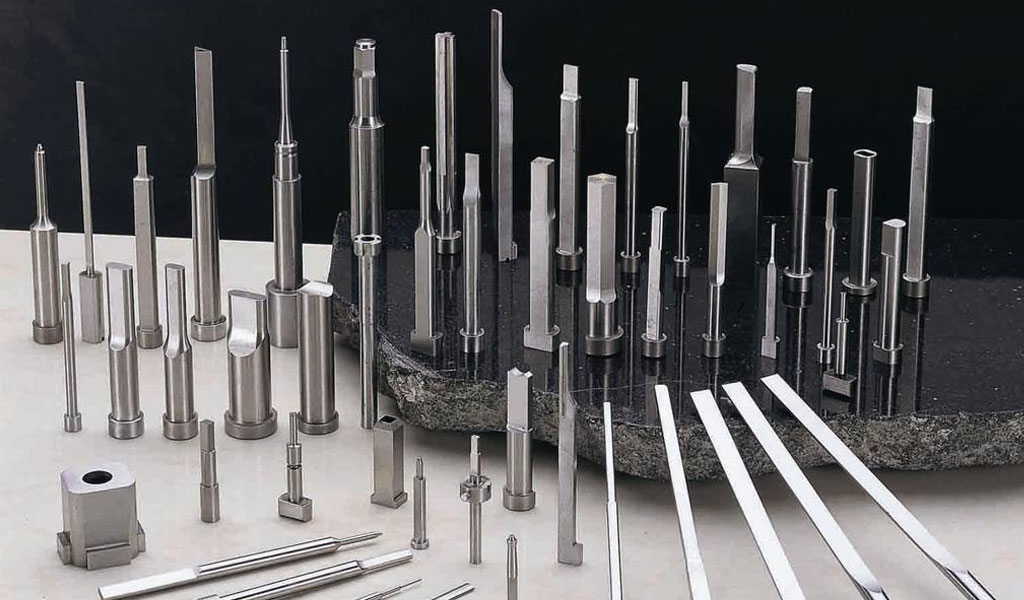
Our Mold Parts and Components Capabilities
With an extensive product selection supported with superior customer service, you can count on BE-CU to meet your needs.
- Main Manufacturing Technology: 5Axis Machining,EDM Wire Cutting,PG Grinding,CNC turning, CNC milling, CNC lathing, CNC drilling
- Finish Treatment:Anodizing, heat treatment, plating, power coating, polishing, grinding, etc.
- Materials:Aluminum, brass, stainless steel, steel, copper titantium, Nylon, plastic, etc.
- Production Equipment: EDM,PG Grinder,JD 5 Axis Machining,CNC precision turning machine,machining center,CNC milling machine, and more
- Quality Assurance:Completely based on ISO 9001 quality management system
- Packaging:Eco-friendly pp bag/PE foam/Carton boxes or wooden boxes or as customer’s specific requirements.
Mold Parts Material and Heat Treatment
The guiding principles for machining mold parts involve formulating corresponding process plans based on different mold parts, materials, shapes, and technical requirements. The general process for machining mold parts includes: blank preparation, rough machining, semi-finishing, heat treatment (quenching, tempering), precision grinding, electrical discharge machining (EDM), bench work trimming, and surface finishing. By controlling each step in the machining process, the required machining precision is achieved.
Heat treatment of mold parts should achieve the required material hardness while ensuring that the part’s dimensions and shape remain stable during and after processing. Different heat treatment methods are applied based on the material and structural characteristics of the parts. Internal stress during heat treatment must be controlled, and the heat treatment process should fully consider material hardenability, overheating sensitivity, and decarburization sensitivity. Thin-walled parts should adopt the press quenching process.
- Selection of Precision Mold Materials: In addition to using CrWMn, Cr12, 40Cr, GCr15, Cr12MoV, and 9Mn2V hard alloys, for some high-stress and heavily loaded dies and punches, alloy steels with high thermal stability and good microstructure such as S2, S3, V10, APS23S1, G2, G3, G4, and G8 can be selected.
- Stress Relief Treatment After Quenching: Quenching leaves residual stress in the workpieces, which can cause dimensional changes or even cracking during subsequent finishing. Therefore, parts should be tempered immediately after quenching to eliminate quenching stress. For parts with complex shapes and multiple internal and external corners, tempering alone may not be sufficient to eliminate quenching stress, and stress relief annealing or multiple aging treatments may be required before finishing to fully release the stress.
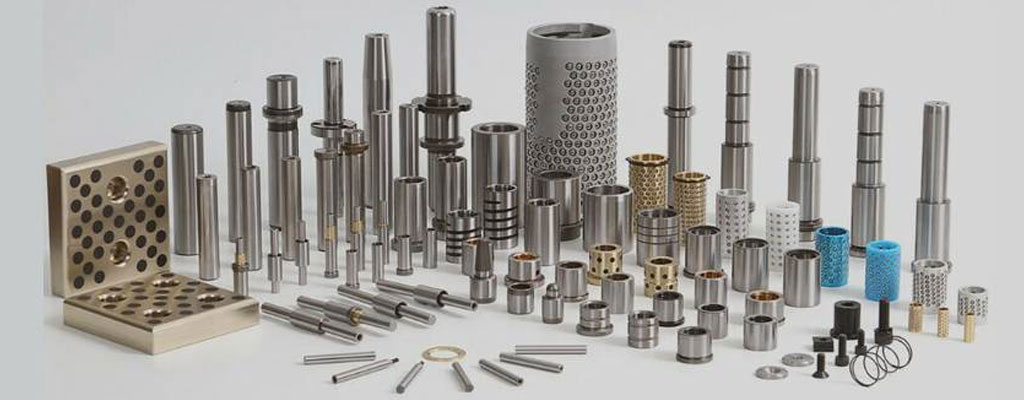
Complete Mold Parts And Components Company
Your time is too valuable to waste on mold parts that isn’t right the first time. Work with a special-purpose mold parts & components company that will design your tooling or parts for die casting mold, injection mold, spinning dies,stamping mold,powder metallurgy dies and other forming mold needs to fit your exact requirements.
Different Types of Mold Parts and Components Available at Be-cu
The demand for high quality non-standard mold parts in all industries is increasing day by day, which is an great opportunity for the rapid prototyping industry. Mold industry is a manufacturing industry that provides mass production mold, and is the foundation and core Department of modern manufacturing industry. Mold parts is also the basic production equipment of die casting,metal stamping and injection mold industry. The parts of mold,die and toolings are usually processed by CNC machine,grinder and edm wire cutter.With our industry leading customer service team and extensive inventory, you can count on BE-CU Company to provide the products you need whether a new tool build, retrofit or repair.

General Mold Components
We offers a wide range of General Mold Components that range from leader pins, bushings, sprue bushings, locating rings, springs, limit switches, cycle counters, data collection, support pillars, tunnel gate inserts, fasteners, dowels, stop buttons and conformal cooled sprue bushings. Each mold component meets our high standards of quality, reliability and performance.
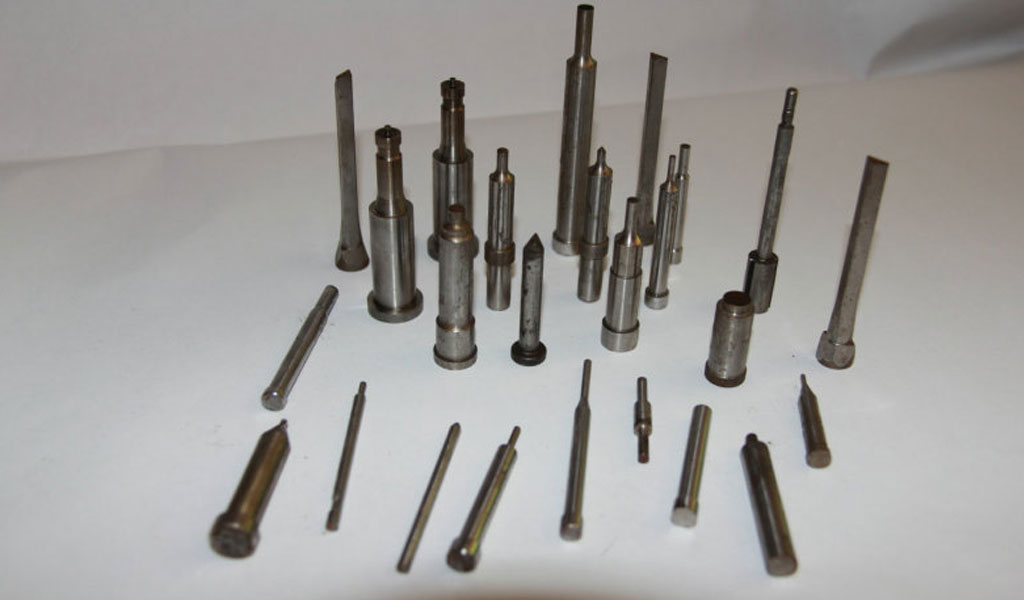
Part Ejection
BE-CU Mold Company’s Part Ejection Products include Pins, Blades, Sleeves, and other part ejection products available in both inch and metric sizes. Our trademarked BE-CU Mold™ Ejector Pin has been recognized as the industry standard for over 20 years. From prototype to production BE-CU Mold Company has you covered. With our incredible customer service and wide product selection, you can count on BE-CU Mold Company to meet your needs.

Core Pins
BE-CU Mold Company’s Core Pins are offered in Soft, Hard and Copper Alloy materials. The Soft Core Pins have a hardness range of 30-35 Rc and the Hard Core Pins have a hardness range of 50-55 Rc. For applications that require heat removal and better thermal conductivity performance than steel, our Copper Alloy Core Pins offer superior heat transfer. Utilize the Core Pin Retainers to easily hold core pins in place without the need for an additions plate.

Alignment Locks
Be-Cu mold company’s Alignment Locks provide positive and precision alignment between mold halves. Our family of mold locks include more than ten different styles for both top lock and side lock requirements. We also offer guide locks, shuttle mold locks, tapered bar locks, taper round locks and multi-plate locks. Our locks are easily installed and provide a dependable, smooth acting, long lasting locking system.
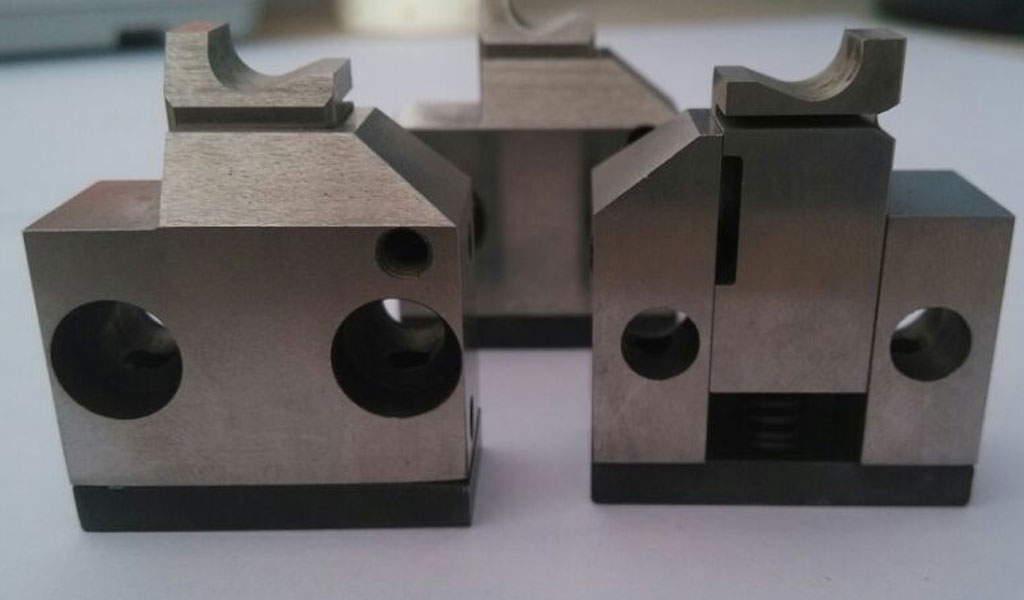
Mold Action
From wear products to lifters and slides, BE-CU is your trusted source for Mold Action Products. With our incredible customer service and wide product selection, you can count on BE-CU to meet your needs.

Mold Cooling and Medical Dies
We offers a full range of Mold Cooling solutions ranging from brass baffles to Digital Flow Meters from conformal cooled sprue bushings. Controlling the cooling in your mold is a critical part of the molding process which requires the correct components.
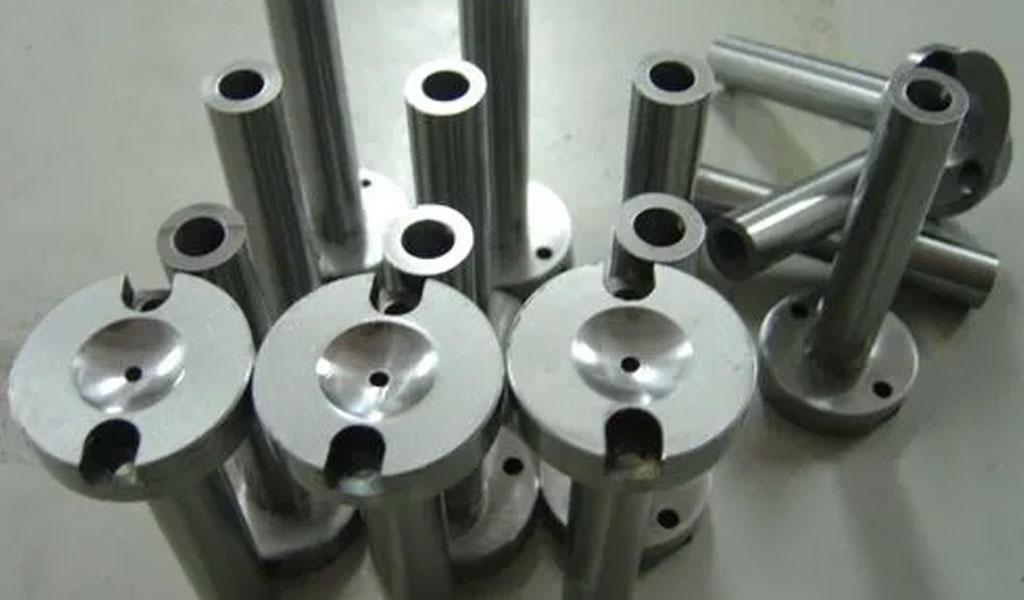
Mold Date & Recycling Inserts
Our Mold Date Insert products is the industry leader for traceability. The mold date inserts provided by BE-CU for the injection molding industry will give molded parts the identification they need for days, months and years in a large variety of diameters.
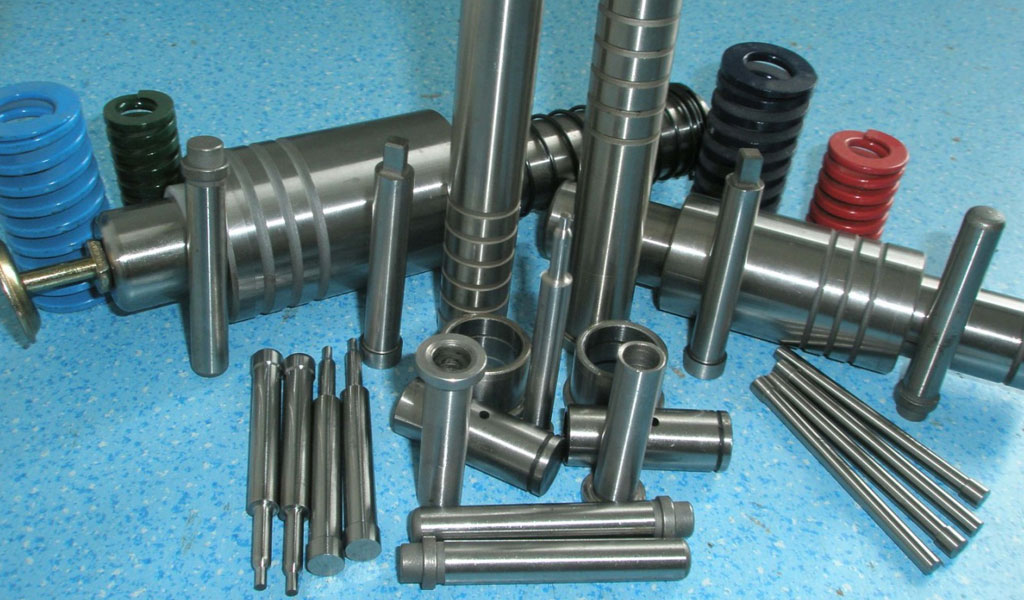
Custom Components
We provides a variety of unique custom component products for the plastics industry. Our team has decades of tooling experience to confidently handle the most intricate designs in the industry today. Use our custom component templates to provide the necessary information in the most convenient method to our team!
Our Case Studies Gallery Of Mold Parts And Components
With an extensive product selection supported with superior customer service, you can count on BE-CU to meet your needs.
-

Precision Grinding Tungsten Steel Mold Parts
-

Special-Shaped Non-Standard Medical Device Needles
-

High-Speed Steel (HSS) Die Punching Needles
-

Precision Tungsten Copper Alloy Eccentric Insert
-

5 Axis CNC Machining Spiral Bevel Gear Mold
-
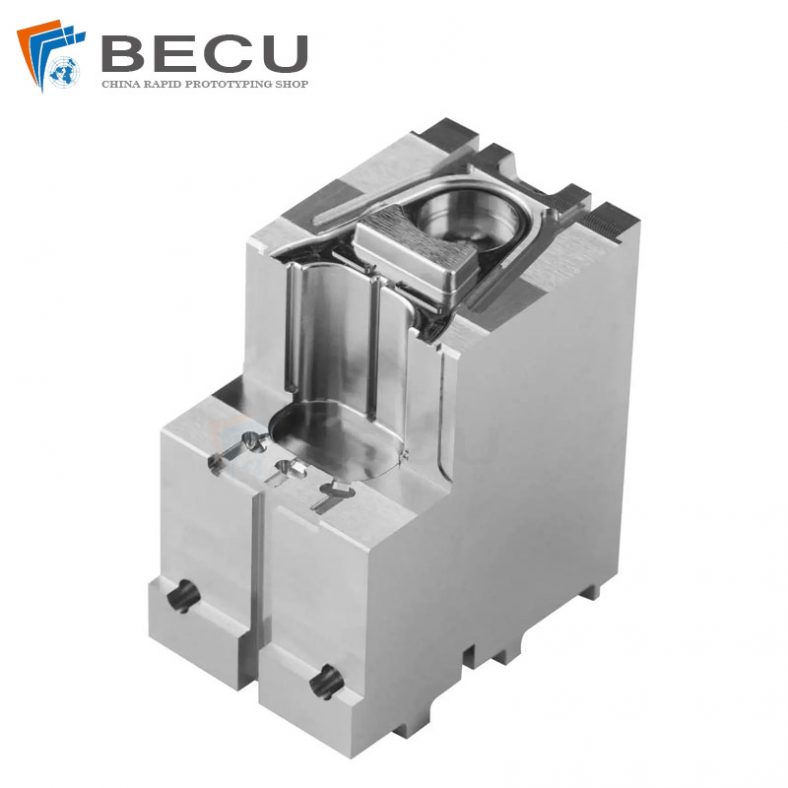
Small Precision Injection Molding Inserts
-
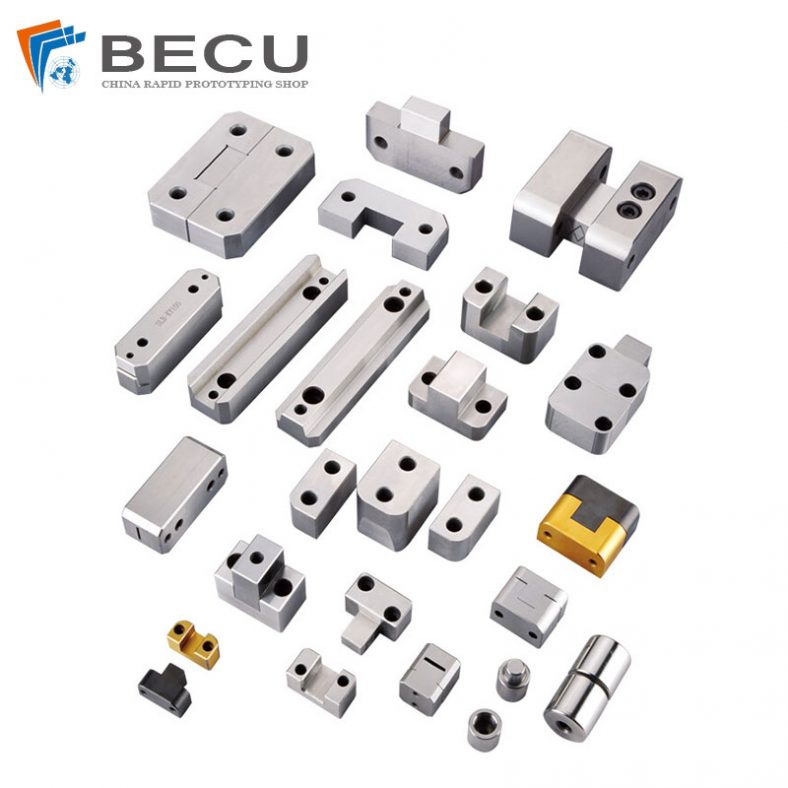
Non-Standard Position Component For Mold
-
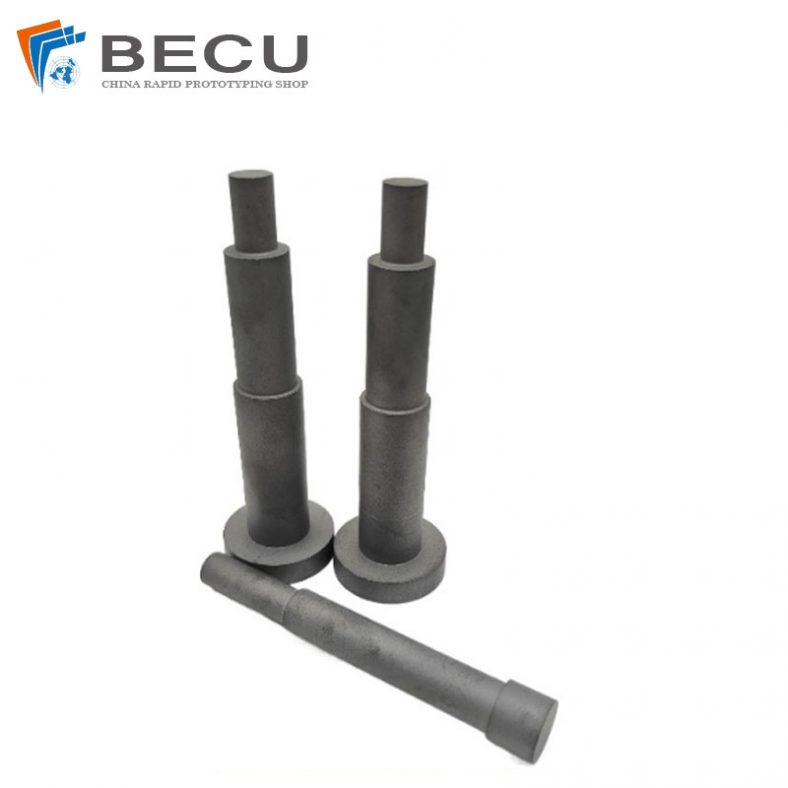
CNC Machining Tungsten Cobalt Carbide Punch
-
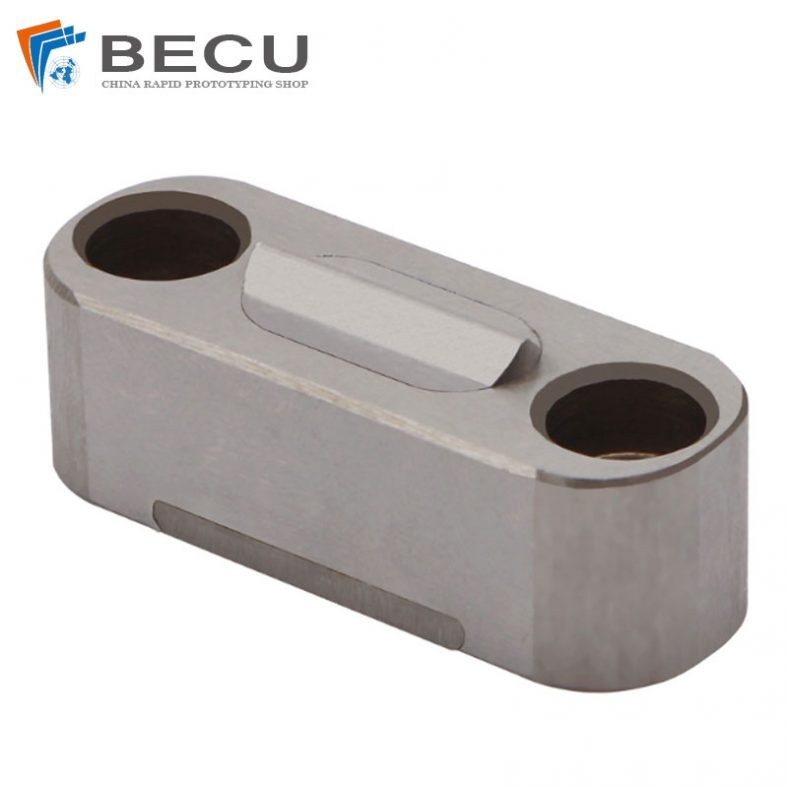
Standard Position Limiting Clamp For Plastic Mold
-
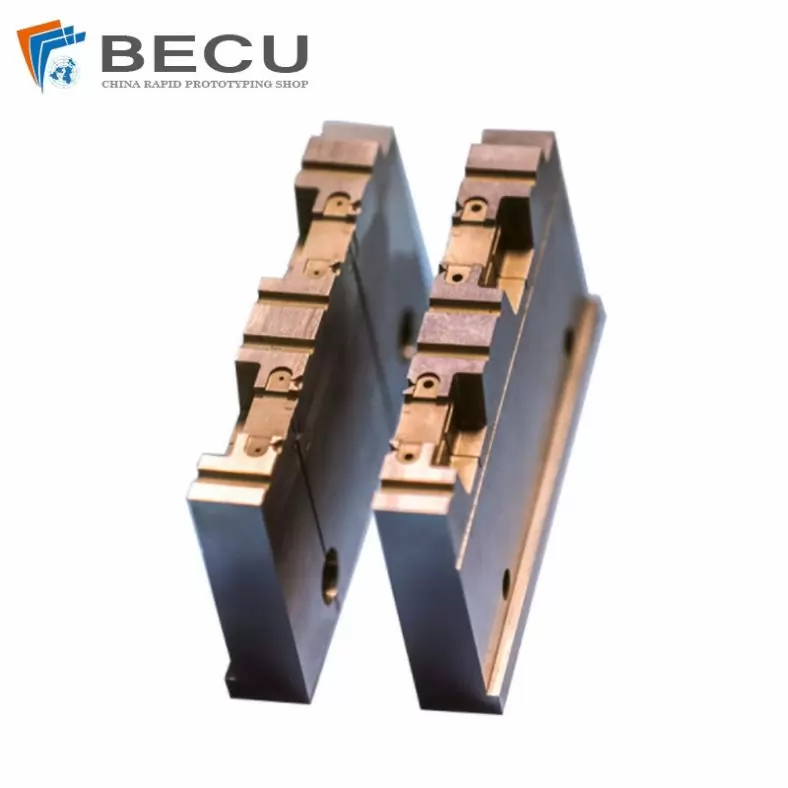
Precision Wire Cutting Plastic Injection Mould Core
Control of Precision Mold Grinding
Grinding is a key process in precision mold machining. Precision grinding must strictly control grinding deformation and cracks, even micro-cracks on the workpiece surface. The following aspects should be considered when formulating precision grinding processes.
- Selection of Grinding Wheels: For mold materials characterized by high tungsten, high vanadium, high molybdenum, and high alloy content and hardness, PA chrome corundum grinding wheels and GC green silicon carbide grinding wheels are suitable. When machining hard alloys and materials with very high quenched hardness, diamond wheels with organic binders should be used. Organic binder wheels have good self-sharpening properties, and the workpiece precision can reach above IT5, with a roughness of up to Ra=0.16µm. CBN cubic boron nitride wheels are effective for precision machining on CNC profile grinders, coordinate grinders, and CNC internal and external cylindrical grinders, providing better results than other types of wheels. During grinding, wheels must be dressed in a timely manner to maintain sharpness. Dull wheels can cause surface burn, micro-cracks, or grooves on the workpiece, affecting machining accuracy.
- Selection of Feed Rate: The feed rate for precision grinding should be small, with adequate cooling during grinding. It is preferable to use coolant media, and parts with a machining allowance within 0.01mm should be ground at a constant temperature.
- Workpiece Clamping: Shaft parts, characterized by multiple rotational surfaces, typically require precision grinding using cylindrical and internal grinders, utilizing the grinder’s chuck and tailstock center for clamping and positioning. Alternatively, workpieces can be positioned using both centers at the ends. The connection line between the chuck and the center forms the grinding centerline. If the centerline wobbles, the coaxiality of the finished workpiece cannot meet the requirements. Therefore, concentricity checks of the chuck and center must be performed before machining. For grinding thin-walled inner holes, a holding fixture can be used; a thicker section is left during turning and removed after inner hole grinding is completed.
Control of Electrical Discharge Machining (EDM)
- Wire EDM Preparation: Use precision slow-wire EDM machines with machining accuracy of ±0.001mm and surface roughness of Ra=0.2µm. Select high-deionization water for wire cutting, ensuring the verticality of the wire meets the machining accuracy requirements, and maintain appropriate tension. The wire material should match the workpiece material to ensure reasonable machining speed.
- Machining Route Design: Wire EDM can disrupt the original stress balance of the material, causing stress concentration at corners. To handle this, use the vector translation principle: leave a 0.8-0.9mm allowance before finishing, roughly pre-process the cavity shape, then perform heat treatment to release machining stress as much as possible before finishing, ensuring thermal stability. For punch machining, use four cuts, and reasonably determine the wire entry position and path. Choose clamping positions to prevent the workpiece from becoming a cantilever after the first cut, ensuring good stress distribution and not affecting subsequent machining. Drilling holes in the blank for threading gives better results than cutting from the outline.
- EDM Forming Process: Rough and finish electrodes should be made separately. The finish electrode is machined using CNC machines and made from Cu-W alloy, which has good overall performance and lower electrode wear compared to copper electrodes. Under good chip removal conditions, it is suitable for machining difficult materials and parts with complex cross-sectional shapes. Ag-W alloy electrodes have better performance than Cu-W alloy electrodes and are used for precision machining. Graphite electrodes, with low wear, high hardness, fast erosion speed, and low surface roughness, are selected from high-quality imported graphite. Before finishing EDM, perform precise calibration trimming to remove the hardened thin layer formed on the surface.
Surface Treatment and Mold Assembly
Surface Treatment: After finishing, the surface treatment should ensure the workpiece surface has no pores, uniform hardness, minimal anisotropy, low inclusions, and no stress-concentrated areas like tool marks or grinding scratches. Polishing, grinding, and deburring should be performed to remove sharp edges and corners. Post-EDM, the grayish-white 6-10µm hardened layer, which is brittle and contains residual stress, must be fully removed before use.
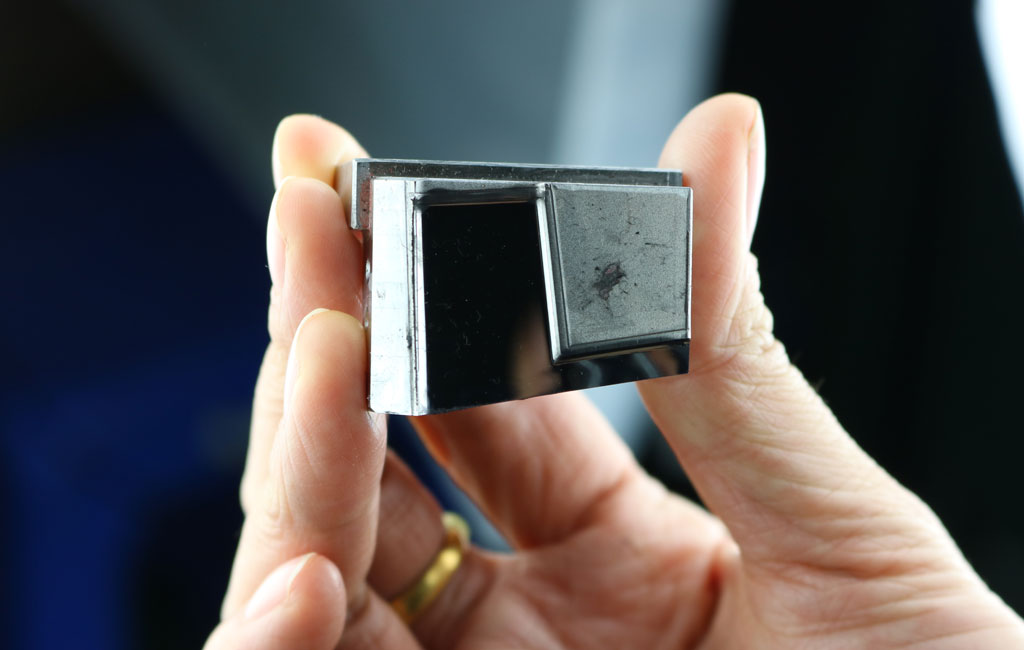
Mold Assembly: Before assembly, workpieces should be thoroughly demagnetized and cleaned with ethyl acetate. Machining and EDM processes can cause slight magnetization, attracting small debris. During assembly:
- Fully understand the structure and technical requirements of the assembly drawings.
- Ensure all parts are complete.
- Correctly list the assembly sequence of each component.
- Check the dimensional accuracy of each part and clarify the fitting requirements.
- Prepare all necessary assembly tools.
- Start with assembling guide posts, guide bushings, and cavity blocks in the mold frame.
- Combine the templates with the punch and die, adjusting the positions of the plates.
- Open and close the mold to check if the mold actions are accurate and reliable.
Guide to Mold,Die and Tooling Manufacturing Methods
We share information, tips, guide and things we’ve learned from our years in the Mold,Die and Tooling and manufacturing industry.
-
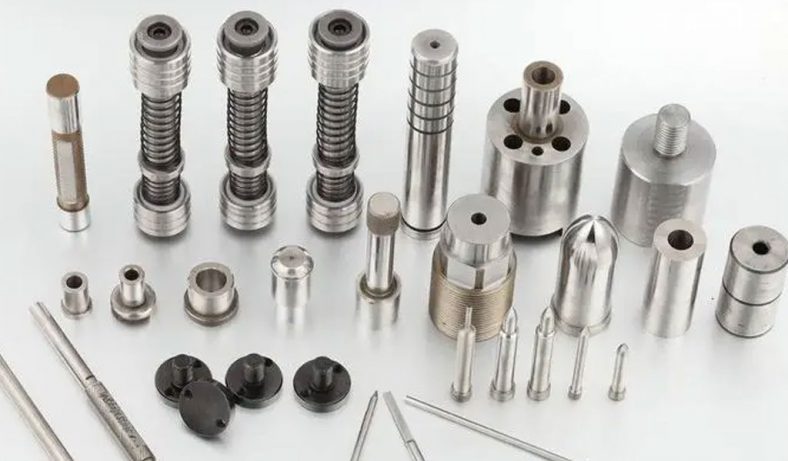
What Is Mold Parts:Its Components, Functions, and Applications
-
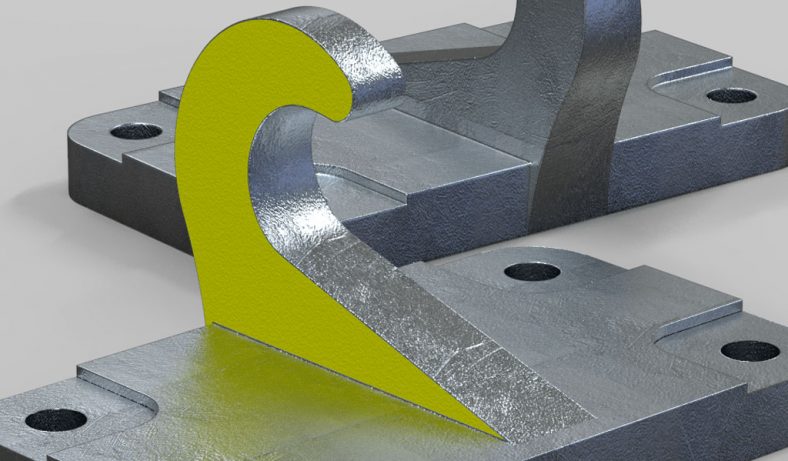
Draft and Texture in Plastic Injection Molded Parts
-

Gate Sizes and Placement in Injection Molding
-

Steel vs. Aluminum for Injection Molds
-
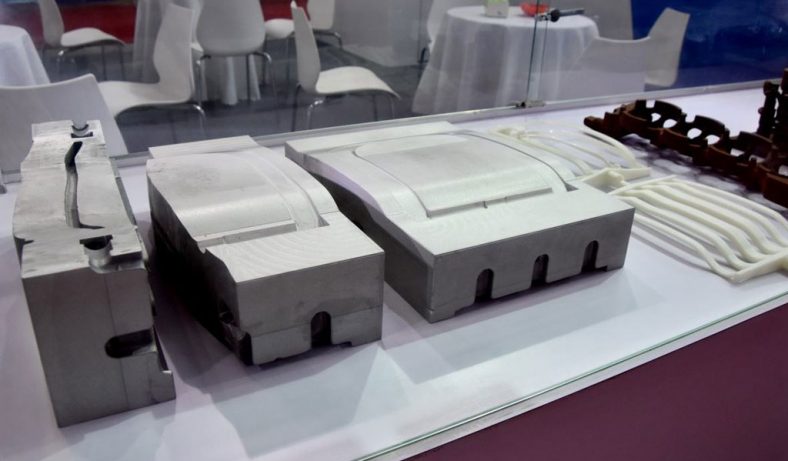
Conformal Cooling: Advancing Plastic Injection Molding Efficiency and Performance
-

Hot Runner vs Cold Runner Molds
-
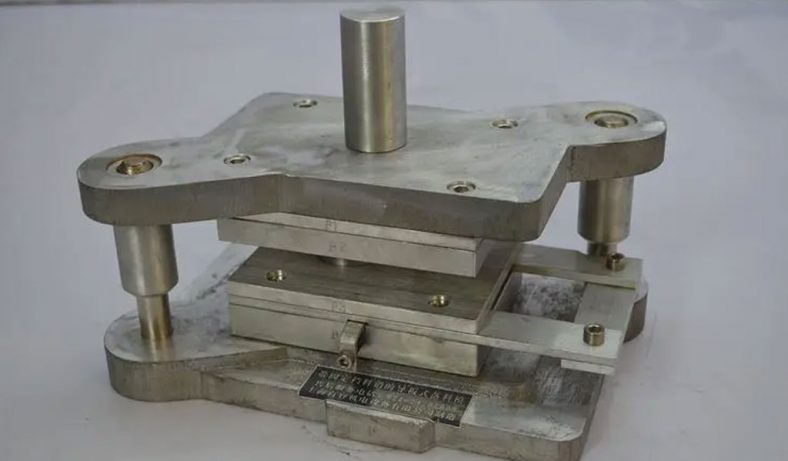
What Mold Materials Can Make Good Stamping Dies And Punching Needles?
-

Ways To Improve The Life Of Precision High Speed Stamping Dies
Other requirements or custom designs, welcome to contact us for a free quote fast!

